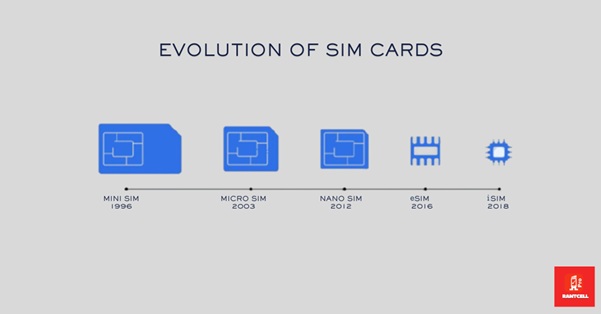In 2023, there are approximately 16.8 billion mobile devices worldwide, many of which rely on either a physical Subscriber Identity Module (SIM) card or a digital eSIM. Both serve the same purpose—identifying users on cellular networks like AT&T, Verizon, and T-Mobile. However, the way they integrate with devices differs significantly. So, now let us see are eSIMs replacing traditional SIMs along with User-friendly LTE RF drive test tools in telecom & RF drive test software in telecom and User-friendly 4G Tester, 4G LTE Tester, 4G Network Tester and VOLTE Testing tools & Equipment in detail.
A SIM card is a physical chip that can be inserted into and removed from devices, while an eSIM is embedded directly into a device’s hardware. Both technologies allow users to connect to mobile networks, but the rise of eSIMs has sparked discussions about whether traditional SIM cards are nearing obsolescence.
The Evolution of SIM Technology
The first SIM card was introduced in 1991 by the German company Giesecke+Devrient, with the initial batch of 300 cards sold to Finnish wireless network operator Radiolinja. These early SIMs were the size of a credit card and primarily stored contact information and messages, functionalities now largely handled by cloud storage.
Over time, SIM cards became smaller and more efficient. In 1996, the mini SIM was introduced, followed by the micro SIM in 2010, which debuted in Apple’s iPhone 4. The nano SIM, released in 2012, remains the smallest form factor for physical SIMs.
In 2017, the eSIM was launched, representing a shift toward a fully digital solution. Unlike traditional SIM cards, eSIMs are embedded into a device’s motherboard, eliminating the need for a physical SIM tray. Jeff Fieldhack, a research director at Counterpoint Research, noted, “The eSIM is a natural evolution, as it saves space, is more efficient, and consumes less power.”
As device manufacturers reduce reliance on physical components like headphone jacks, the transition away from SIM trays seems inevitable.
eSIM Adoption: Current Trends and the Road Ahead
Most smartphones released after 2020 support both a physical SIM card and an eSIM, enabling dual-SIM functionality. This allows users to maintain separate contact lists and connect to multiple networks simultaneously. For example, travelers can temporarily use a foreign network while retaining their primary SIM.
In 2022, Apple took a significant step by launching the US version of the iPhone 14 without a SIM tray, making it the first mainstream eSIM-only smartphone. Other manufacturers are expected to follow suit, with the eSIM market projected to grow by $11.6 billion over the next five years.
Beyond smartphones, eSIM technology is increasingly used in devices such as smartwatches, laptops, and IoT hardware. Cellular-enabled versions of the Apple Watch, Samsung Galaxy Watch, and Huawei Watch already utilize eSIMs. Additionally, Windows 10 and 11 support eSIM connectivity, paving the way for always-connected laptops.
Advantages of eSIM Technology
eSIMs offer several benefits that contribute to their growing adoption:
- Digital Activation: eSIMs can be activated and updated remotely, allowing users to switch carriers without handling physical cards.
- Travel Flexibility: Users can temporarily connect to local networks while abroad without needing to acquire a new SIM card.
- Space Savings: eSIMs eliminate the need for a SIM tray, freeing up space for other components within devices.
- Environmental Benefits: Since eSIMs do not require plastic cards or packaging, they generate less waste.
- Loss Prevention: Unlike physical SIMs, eSIMs cannot be misplaced unless the entire device is lost.
Challenges of eSIMs
Despite their advantages, eSIMs come with certain limitations:
- Device Switching: Transferring an eSIM to a new device is less straightforward than moving a physical SIM card.
- Troubleshooting: Users cannot test network issues by swapping the SIM into another device.
- Compatibility: eSIMs are only supported by unlocked devices, excluding those tied to specific network providers.
- Limited Coverage: Not all networks or regions currently support eSIMs.
The Rise of iSIM Technology
As eSIMs gain traction, the next iteration of SIM technology—integrated SIMs (iSIMs)—is emerging. Unlike eSIMs, which are soldered to a device’s motherboard, iSIM functionality is directly embedded into the device’s central processing unit (CPU).
Advantages of iSIMs
iSIMs bring several key improvements over traditional and embedded SIMs:
- Power Efficiency: iSIMs use approximately 70% less power, potentially extending device battery life.
- Smaller Size: By integrating SIM functionality into the CPU, iSIMs can be up to 98% smaller than eSIMs.
- Lower Manufacturing Costs: The simplified design and fewer required components reduce production expenses by nearly half.
- Network Flexibility: Like eSIMs, iSIMs allow users to switch networks, making them ideal for IoT devices.
However, the development of iSIMs is more complex and time-intensive due to the integration process, which could delay widespread adoption compared to eSIMs.
Future of SIM Technology
The adoption of eSIMs and iSIMs is expected to continue growing, driven by advancements in connectivity technologies like 5G and private networks. While iSIMs present a compelling future, they are unlikely to completely replace eSIMs in the near term. Analysts predict the eSIM market will reach a value of $16.3 billion by 2027.
As both technologies coexist, their evolution will shape the mobile and IoT ecosystems, offering enhanced flexibility, efficiency, and sustainability.
About RantCell
RantCell simplifies network testing by turning any smartphone into a sophisticated, real-time monitoring tool. It captures vital metrics like signal strength, download speed, and latency with ease, streamlining the way telecom providers and enterprises analyze network performance.
Designed for efficiency, RantCell eliminates the need for expensive hardware, offering a cost-effective and scalable solution that excels in both urban landscapes and remote areas. Its cloud-based architecture ensures precise, reliable data, empowering users to identify and resolve network issues swiftly. Also read similar articles from here.

